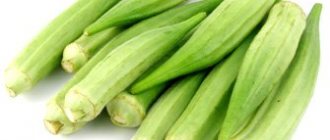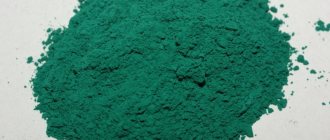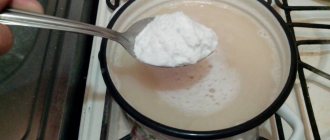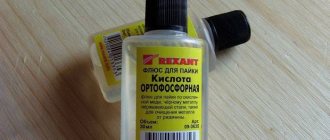Quince (Cydonia oblonga) – a fruit, the fruit of the common quince tree (also known as oblong quince). It is an ancient fruit native to various parts of Asia and the Mediterranean. It was grown in Ancient Greece and Ancient Rome.
Quince is grown in the Caucasus, Transcaucasia and Central Asia - it is quince from these regions that is most accessible to Russians
What is quince
This is a plant in the form of a tree or shrub with edible fruits. Belongs to the Pink family. The plant is distributed in the Caucasus, Central Asia, Transcaucasia, Turkmenistan, Dagestan, the Mediterranean, some areas of Asia, and Europe. Australia. Fruits are used to prepare numerous dishes. They, like other parts of the plant, have medicinal properties, therefore they are present in a lot of traditional medicine.
What does quince look like?
This is a fruit that is the only representative of the genus Cidonia oblonga. Quince is a deciduous tree 1.5-5 meters high, less commonly a shrub. The branches rise up obliquely. The plant has thin scaly bark. The color is dark gray, red-brown or brown-black. The shoots are gray-green. The shape of the leaves is ovoid, oblong or oval. They are alternate, widely elliptical, the base is wedge-shaped or heart-shaped, the color is dark green. The flowers are regular in shape with short stalks. There is a white, pale pink or bright corolla with a diameter of up to 5 cm.
Quince fruit is a hairy false apple, spherical or pear-shaped. It can be smooth or rough. It contains many brown seeds. There were cases when one unit weighed two kilograms. In the wild variety, the weight of false apples does not exceed one hundred grams. The pulp is hard, not juicy. What does quince taste like? It is slightly sweet, tart and astringent. Trees bloom in May-June. The fruits ripen in September-October.
The best harvest is harvested from trees that grow on heavy loamy soils. On sandy loam soil the plant begins to bear fruit earlier. Propagated by cuttings, grafting, shoots from roots, seeds. The natural range of the plant is from the central and southern regions of Europe to Central Asia. The most popular varieties:
- Ordinary . Tree with large fruits. It grows in the North Caucasus, the Lower Volga region, Astrakhan and Volgograd regions, Crimea, Central Asian countries, and Greece. Winter-hardy varieties exist in Belarus, the Baltic states, and central Russia. There are pear-shaped, Portuguese and apple-shaped varieties of common quince.
- Japanese . Shrubs of this variety reach up to 2 meters in height. They are evergreen, with red flowers and incredibly aromatic fruits. The pulp of the Japanese variety contains 4 times more fruit acids than ordinary ones. It is better to dilute the juice from such fruits with water.
- Chinese . It differs from the Japanese one in the appearance of pale pink flowers during the flowering period. Chinese fruits are very aromatic, have fleshy pulp with pronounced sourness and tartness. Rich in vitamins, nutrients, microelements. They help well in the treatment of the liver, spleen, stomach, spasms, pain due to radiculitis, rheumatism. Eliminates swelling during pregnancy and hypertension.
All of the above varieties are divided into several varieties with their own characteristic characteristics. Their names:
- Golden ball;
- Marble;
- Pyramidal;
- Nutmeg;
- Persian sugar;
- Gracious;
- Van Diemen;
- Childs;
- Fuller;
- Krasnoslobodskaya;
- Gurji;
- Ktyun zhum;
- Kubanskaya;
- Collective (contains many stony cells);
- Krasnodar;
- Teplovskaya;
- Amber;
- Zubutlinskaya;
- Vraniska Denmark;
- Jardam;
- Micha is fertile;
- Golotlinskaya apple-shaped;
- Champion;
- Ahmed Zhum;
- Armenian Tursh.
Cultivation and collection
The high-yielding and unpretentious plant reproduces vegetatively: by root shoots, cuttings, vertical layering, grafting. It is as easy to grow as a pear or apple tree. Trees are best planted in warm and sunny areas. They tolerate drought well, but it is better to provide abundant watering. Seedlings can be placed in drained soil.
Mid-April or October is best for planting. It is necessary to choose seedlings with well-developed roots and a formed crown. They are placed at a depth of 50-60 cm. The diameter of the pit is at least a meter. Before planting, add compost or humus. For pollination, two or three trees need to be placed nearby. In fruit-bearing plants, strong annual branches should be shortened. Periodically, the crown is thinned out, removing everything dry. False apples are harvested as they ripen, before the first frost. They store very well; if all rules are followed, they can last up to five months.
Historical information
Since the times of Ancient Greece, the quince fruit has been identified with a symbol of love and fertility. According to legend, the lemon fruit, emitting a wonderful aroma, was presented by Paris to Aphrodite. Since then it has been called the “golden apple” or the “apple of discord.” In medieval Europe, giving this fruit meant confessing your feelings.
Initially, quince, along with rowan, pear and apples, were classified as belonging to the genus Pear. However, there were many differences between these fruits, which forced scientists to classify the fruit into a separate genus, Japanese Pear. It included the following types of quince: Chinese, evergreen, chaenomeles. Despite a number of common characteristics (hard pulp, a large number of seeds, a specific strong aroma, rocky structure), the plants had numerous differences.
In 1822, each type of quince was isolated into a separate monotypic genus: Japanese (Cydonia) - Chaenomeles, Chinese - Pseudocidonia, evergreen - Cydonia.
Archaeologists have found that the tree that produces “golden apples” is one of the most ancient “tamed” plants. It has been established that the first cultivated plantings of quince appeared in Asia four thousand years ago. Since then, the fame of the aromatic fruit has spread to other continents and countries. Today, quince is cultivated in forty countries around the world.
Areas allocated for quince planting:
- Türkiye – 9800 hectares;
- Uzbekistan – 7000 hectares;
- Argentina – 3200 hectares;
- Azerbaijan – 3100 hectares;
- Serbia – 2200 hectares;
- Algeria – 1800 hectares;
- Spain – 1400 hectares;
- Russia – 1000 hectares.
In addition, fruit-bearing trees can be found in Northern Iran, Latvia, Belarus, and Crimea.
The growing area of quince is limited by average annual temperatures of +8 – 9 degrees Celsius, with an absolute minimum of -15 degrees.
What are the benefits of quince?
The fruit contains many substances necessary for the body. The fruits contain many antioxidants that help overcome stress, prevent the aging process, and have an antitumor effect. Thanks to the pectin and dietary fiber they contain, they perfectly cleanse the body of heavy metals and harmful substances, remove excess cholesterol and toxins, and help normalize digestion. Beneficial features:
- bactericidal;
- antiviral;
- restorative;
- sedative;
- anti-inflammatory;
- hemostatic;
- antitumor;
- astringent;
- antitussive;
- adsorbent;
- laxative;
- expectorant;
- diuretic.
Chemical composition of the fruit
Quince is rich in vitamins, minerals, and contains almost all vital elements. The exact figures depend on the variety and many other factors. The table below shows the average values:
| Item name | Content (mg per 100 g of product) |
| Vitamins | |
| WITH | 23 |
| AT 9 | 0,003 |
| E | 0,3 |
| AT 6 | 0,04 |
| P (bioflavonoids) | 200-800 |
| AT 5 | 0,08 |
| Carotene | 0,4 |
| B2 (riboflavin) | 0,03 |
| PP (nicotinic acid) | 0,5 |
| B1 (thiamine) | 0,02 |
| TO | 0,005 |
| Minerals | |
| Calcium | 11 |
| Iron | 0,7 |
| Potassium | 119 |
| Phosphorus | 11 |
| Manganese | 0,3 |
| Magnesium | 8 |
Medicinal properties
The plant belongs to the category of medicinal. Knowing the beneficial properties of quince and contraindications, it can be used to treat many diseases. What beneficial substances do quince fruits contain? Both the pulp and the seeds are valuable. The latter contain a lot of iron, mucous and tannins, and glycerin. A decoction is made from the seeds. It is used as a mild laxative, an enveloping agent that is good for coughs. The decoction can be used as a lotion for eye diseases. It softens the skin, so it can be used as a cosmetic lotion.
The fruit reduces the manifestations of periodontal disease. Lotions and compresses from the juice of the plant help relieve pain from hemorrhoids. It is recommended to eat fresh fruits for anemia and cardiovascular diseases. They have a choleretic effect. The plant is rich in zinc, phosphorus, copper, pectin, calcium, vitamins B, PP, C, A, E. It has antiviral and antioxidant effects.
The juice of the plant also has medicinal properties. It has a diuretic and general strengthening effect. In the old days they were used to treat infertility in women. Helps stop diarrhea, bleeding, vomiting. Due to the presence of fructose, ascorbic acid, gum, amygdalin glycoside fatty oil and starch, the fruit is considered a very valuable food product. There are many ways to consume and use it for medicinal purposes.
Common varieties
The scientific classification of the aromatic tree of the Rosaceae family has changed with the improvement of taxonomy and the development of botany. According to modern data, the genus Quince is monotypic, consisting of a single representative of the common quince (oblong). It is represented by five varieties or garden groups, differing in biological characteristics, ripening speed and fruit shape.
These include the following types:
- decorative (marble and pyramidal);
- garden (pear-shaped, apple-shaped, Portuguese).
Common quince varieties and areas of their growth
Early:
- "Muscatnaya", North Caucasus region;
- “Gold of the Scythians”, North Caucasus;
- “Persian Sugar”, Crimea, Volga region;
- "Van Diemen", Crimea;
- “Kulyab apple-shaped”, Tajikistan.
Mid-season:
- "Krasnoslobodskaya", Volga region, Caucasus;
- "Gurdzhi", Dagestan;
- “Ktyun Zhum”, Southern Dagestan;
- “Kubanskaya”, Crimea, Russia, Caucasus, Moldova;
- "Teplovskaya", Lower Volga region;
- “Amber Krasnodar”, Caucasus;
- "Be-gi-Turush", Tajikistan.
Late ripening:
- “Zubutlinskaya”, Dagestan, Caucasus;
- "Vraniska Denmark", territory of the former Yugoslavia;
- "Jardam", Azerbaijan, Turkmenistan;
- “Fertile Micha”, America, Turkmenistan;
- "Tursh", Armenia;
- "Ahmed Zhum", Dagestan;
- “Champion”, Crimea, Russia.
Varieties of pear-shaped quince are more juicy and sweet, and apple-shaped ones are early ripening.
How to eat quince
The fruits have a hard and dense skin, firm flesh with an astringent, tart taste. It is preferable to eat this fruit after heat treatment. Preparations are made from the fruits: preserves, jams, jams, candied fruits, marmalade. In addition, with the addition of pulp you can make an excellent sauce for poultry or meat dishes. After boiling, stewing or baking, the fruits become soft and acquire a sweetish taste. The fruit can be added to porridges, casseroles, pies and other desserts.
Is it possible to eat quince raw?
Fresh fruits are not very suitable for consumption. Their flesh is too tart and their outer cover is hard. It is advisable to bake or boil them. You can make a lot of delicious desserts from the fruit: marmalade, jelly, candied fruits, jam, juices and compotes. After picking from the tree, the fruits should be allowed to ripen for a couple of weeks. During this period they will become a little softer. When eaten raw, fruit slices can be added to tea instead of lemon. They will give the drink a pleasant fresh taste.
Quince juice
The drink is prepared from fruits and consumed fresh or canned. The best juices are obtained from varieties with a mild nutmeg flavor. They can be drunk pure or diluted. The juice is useful for increasing appetite, for poisoning, and intestinal disorders. It can be mixed with apple, peach, pumpkin, and banana. Children, people with stomach and duodenal ulcers, and constipation should drink it with caution.
Quince jam - recipe with walnuts and lemon zest
I think this is the best way to use quince. Both adults and children eat jam with pleasure. It is extremely tasty, tender, fragrant. The amber slices look like marmalade. No candy is needed when there is such yummy food in the house!
Prepare:
- kilogram of quince,
- 0.6 kg sugar,
- lemon,
- a glass of walnuts.
In this recipe I do without pre-blanching. The right syrup is viscous like honey.
What to do:
- Cut as desired. Size 2-3 cm.
- Place in a bowl, add sugar. We are waiting for the juice to appear. It is better to leave it overnight and continue in the morning.
- Place on the fire, bring to a boil, stirring constantly.
- Once it boils, set aside.
- After 5-6 hours we repeat the procedure.
- Then again.
- Throw in the chopped nuts and lemon zest.
- We bring it to readiness.
- Remove from heat.
I don’t see any point in making jam for the winter. By the time the harvest appears, it is already winter. Moreover, such yummy food does not stay stale. I eat it in a couple of days.
The use of quince in folk medicine
There are many uses for the plant. Products prepared from it prevent the negative effects of viruses and infections on the body. They help in the treatment and prevention of influenza and acute respiratory diseases. Juice with pulp is recommended to be consumed regularly in case of high cholesterol levels in the blood, to treat diseases of the gastrointestinal tract, and to stop vomiting. The beneficial effect on the stomach and digestive processes is due to the high fiber content, so the product can be recommended to people who are obese.
Use has a positive effect in the treatment of diseases of the nervous system. They contain a lot of antioxidants that help recover from nervous strain and stress. Drinking juice helps improve the condition of patients with bronchial asthma. The plant helps in the treatment of ear diseases. Lotions with a decoction are used for anal fissures and rectal prolapse. The plant is indicated for pulmonary tuberculosis, tracheitis, liver diseases, gastroenteritis, flatulence, and colitis.
Decoction of fruit seeds
The drug is actively used to treat anemia and anemia. Decoctions help with eye diseases, the effects of sunstroke, swelling, and dyspepsia. These drugs can be used to treat inflammatory processes in the stomach, diarrhea, and dysentery. Several recipes:
- For gastrointestinal diseases. Pour 10 g of crushed quince seeds into a glass of boiling water. Cook in a steam bath for 15 minutes. Cool, rub through a sieve. Take 100 ml three times a day before eating.
- For colitis. Pour 10 g of seeds with a liter of cold water. Leave for 10 hours. Strain. Take 0.5 cups 3 times a day.
- To stop uterine bleeding. Boil 10 g of seeds in 100 ml of water until the liquid becomes slimy. Take 3-4 times a day, 1 tbsp. l. spoon of decoction.
Quince leaf infusion
Remedies from certain parts of the plant are good for fevers and diabetes to reduce glucose levels. Effective tincture recipes:
- For asthmatic attacks, intestinal inflammation. Pour 5 g of quince leaves with a glass of boiling water. Cook in a water bath for a quarter of an hour. Strain and add water to replace the evaporated water. Take the product 3-4 times a day before meals, 2 tbsp. l.
- Against excessive sweating of the feet. 1 tbsp. l. pour a glass of boiling water over the leaves. Cook for 5-10 minutes. Insist for an hour. Use a foot rub.
- To lower blood pressure and sugar levels. Pour 100 g of leaves with 125 ml of vodka. Insist for a week. Take 1 tsp. twice a day.
Quince decoction for coughs and sore throats
The product is excellent for helping with sore throat and other symptoms of colds. Recipes:
- Cut one fruit into small pieces. Pour a glass of boiling water. Insist for an hour. Take 3-4 times a day, 1 tbsp. l.
- Boil 10 g of seeds in 100 ml of water until the contents of the pan become slimy in consistency. Strain the resulting “jelly”. Take 1 tbsp. l. mass three times a day.
- Pour boiling water over 5 g of seeds and drink like tea. This remedy helps very well to get rid of dry cough, including allergic cough.
A little history
Historians claim that the first ancient texts that mention the apple are actually about the quince, its historical predecessor. After all, apples were still unknown to the ancient world. Therefore, Eve could hardly seduce Adam with an apple. Most likely, these were quince fruits. They became the “bone of discord” in the quarrel between the most beautiful women in ancient Greek mythology - Aphrodite, Athena and Hera. Remember this story? Then the gods celebrated the wedding of the king of Thessaly Peleus and the goddess Thetis. But the goddess of discord and chaos, Eris, was not invited to the celebration. Angry that she was left without an invitation, Eris came up with revenge on the Gods. She secretly snuck into the wedding and quietly threw a golden apple with the inscription “For the fairest” into a basket with a variety of exotic fruits. Three beauties of that time - the goddesses Aphrodite, Athena and Hera - extended their hands to the apple, because each of them considered herself worthy of an inscription on the fruit. The dispute between the goddesses ultimately led to the Trojan War and the destruction of Troy. And that same object was nothing other than a quince fruit. The ancient Greeks also have a second mention of this fruit. Do you remember in 6th grade in literature class we studied the myth of the Argonauts’ campaign for the Golden Fleece? There, the heroes, led by Jason, obtained not only the Golden Fleece, but also the daughter of the king of Colchis, the sorceress and legendary founder of medicine Medea. And the princess took with her from her homeland - from the country of Eeta, the Western Georgian kingdom of Colchis - quince fruits. And on the wedding day, according to the tradition of her people, Medea planted a quince in her bedroom. Jason and his beloved lived happily ever after in Greece until Medea's envious woman destroyed the quince. By the way, this legend confirms the properties of quince as a source of vitality and sexual energy, capable of influencing the sensuality of men and women (that is, in modern terms, an aphrodisiac). It is reliably known that quince was a ritual fruit at weddings in Ancient Greece. The bride ate this fruit before her wedding night so that the aroma of the first kiss would be pleasant and memorable.
Back to contents
Benefits for weight loss
For people on a diet, quince is one of the most important products. It is low in calories, satiates well and suppresses appetite for a long time. The fruits have almost no cholesterol and fat. Their use helps improve digestion processes. For weight loss, it is useful to introduce baked and boiled quince into your diet. Based on it, a mono-diet has been developed, following which you will be able to lose up to 5 kg in a few days.
Calorie content of fruit
100 g of product contains 40 kcal and 8.9 g of carbohydrates. There is no fat, cholesterol or sodium in the fruit at all, so it is perfect for dietary nutrition. 100 ml of quince juice contains 45 kcal, 10.6 g of carbohydrates and 0.5 g of protein. More accurate indicators of energy value depend on the type of fruit, the area where the tree began to grow, soil, climatic conditions, and care characteristics.
Chicken liver with quince sauce
For a hearty and healthy snack, prepare a package of chicken liver, 2 large fruits and an onion. You will also need 150 ml of white wine, a teaspoon of honey, 0.5 tbsp. vegetable oil, salt, spices and 30 g of flour, fried in a dry frying pan until golden brown.
Procedure:
- Prepare the quince properly (wash with a brush, remove the central part, peel, chop into cubes).
- Heat the oil in a frying pan, fry the onion and fruit for 5 minutes. Stir constantly.
- Pour in the wine, add the remaining ingredients, simmer for 10 minutes. until soft.
- Fry the chicken liver separately until golden brown.
- Transfer to sauce.
- Bring to a boil, remove from heat.
The liver is eaten hot or warm. If you add more fruit, you won't need a side dish. This is a very healthy, nutrient-dense food. It replenishes protein, vitamins and mineral salts, gives strength and good mood.
Quince in cosmetology
Fruits contain a lot of fruit acids, especially if they are juicy and ripe. The pulp is very useful to use in cosmetic masks. Products containing it have an antiseptic effect, dry, and nourish the skin. Recipes for good masks:
- For oily skin, anti-acne . Grate the ripe quince fruit on a fine grater. Apply the pulp to your face in a thin layer. Avoid the area around the lips and eyes. After seven minutes, wash with warm water.
- For normal and combination skin . Grate the ripe quince fruit on a fine grater. Mix with beaten egg yolk and steamed oatmeal with 50 ml of boiling water. Apply the warm mixture to your face and décolleté. After a quarter of an hour, rinse off. Just blot your face with a napkin, do not dry yourself with a towel.
- For all skin types . Finely grate one ripe quince fruit. Add 1 tsp to the pulp. corn starch and oatmeal, buckwheat or rice. Mix thoroughly and apply the mixture to your face. Rinse off with room temperature water after 20 minutes.
Quince scrubs and lotions have proven themselves very well. They improve the appearance of the skin and restore blood circulation. Recipes for making and using:
- Grind one ripe fruit along with the seeds. Add 1 tbsp. l. coarse salt. Stir. Apply to face with gentle massage movements. Rinse off after three minutes. Pat your skin dry with a napkin. After an hour, apply nourishing cream. Using a scrub once a week helps make the skin softer, softer, and improves complexion.
- Lotion for oily skin. Extract the juice of one fruit. Add half a glass of medical and camphor alcohol. Slowly add one egg yolk. Use lotion to wipe your face every evening. It will help get rid of oily shine. It is recommended to store the product in a cool and dark place.
Storage methods
Buy large, dense fruits with evenly colored yellow skin without green spots or any other inclusions. Fresh ripe quince has a subtle, light aroma; unripe fruits smell almost nothing. Do not take quince with dents, otherwise it will quickly deteriorate. Quince is sensitive to bruises, so take it home from the store in a separate bag.
Store in the refrigerator in the fruit compartment, wrapping each fruit in paper. This way it can be stored for quite a long time (2-3 months).
Back to contents
Contraindications
Due to some substances that make up quince, not everyone is allowed to eat it. Contraindications to the use of quince and dishes with it:
- chronic constipation;
- predisposition to allergies;
- pleurisy;
- individual intolerance;
- enterocolitis.
In a number of situations, the use of quince is not categorically contraindicated, but it must be done with caution. Before eating quince, it is better to consult a doctor. You should eat it with caution when:
- peptic ulcer;
- frequent allergic reactions (fruits irritate the larynx);
- pregnancy;
- high blood clotting;
- lactation;
- constipation
Use during pregnancy and breastfeeding
A pregnant woman can eat the fruit if she does not have problems such as high acidity of gastric juice, gastritis or ulcers. It is recommended to consume fruit that has undergone heat treatment.
We recommend: Is it possible to freeze fresh apricots for the winter?
A nursing mother is allowed to introduce quince into her diet from the moment the baby turns 4 months old. If you pamper yourself earlier, the child runs the risk of allergic reactions, intestinal colic and bloating.











